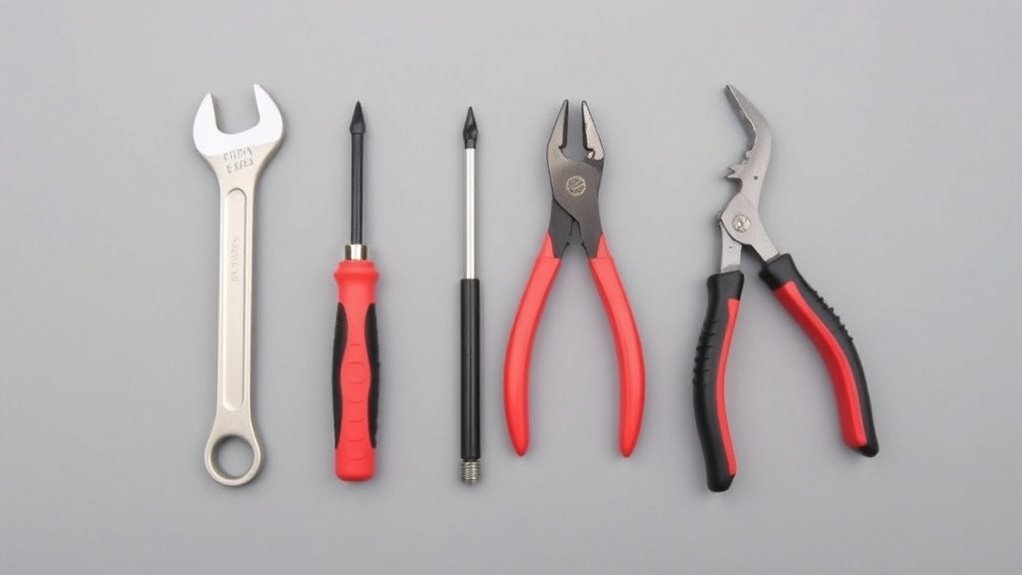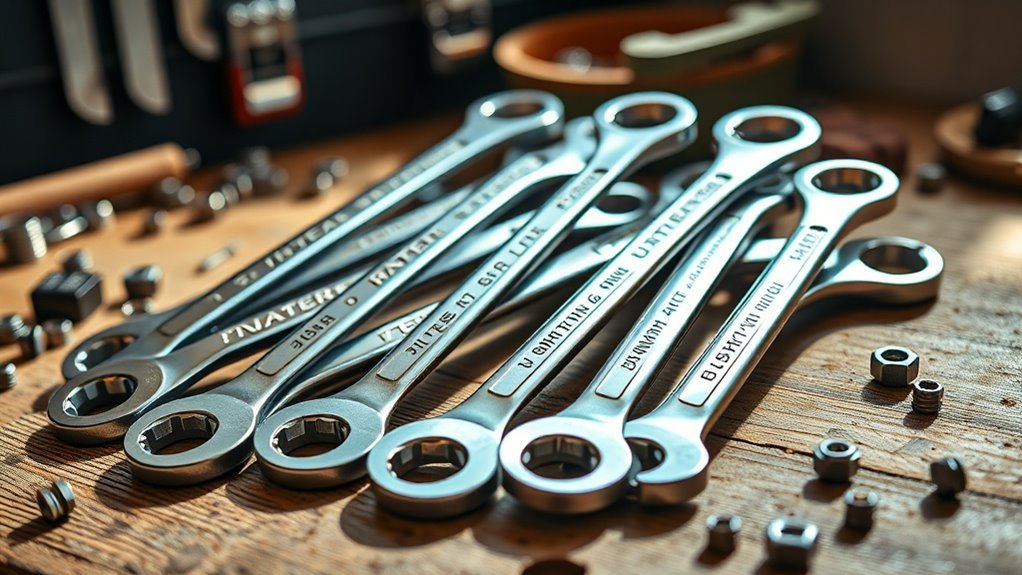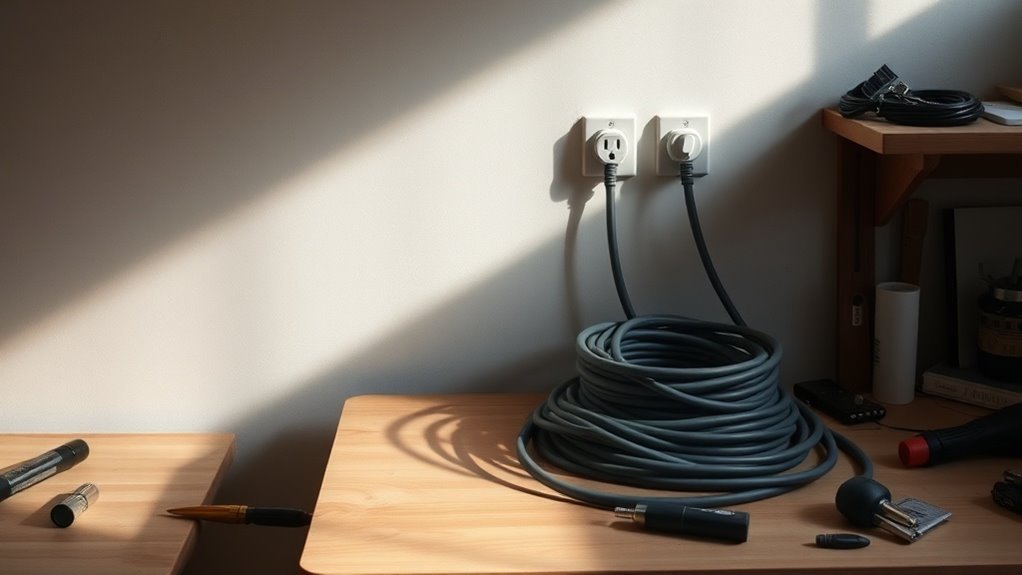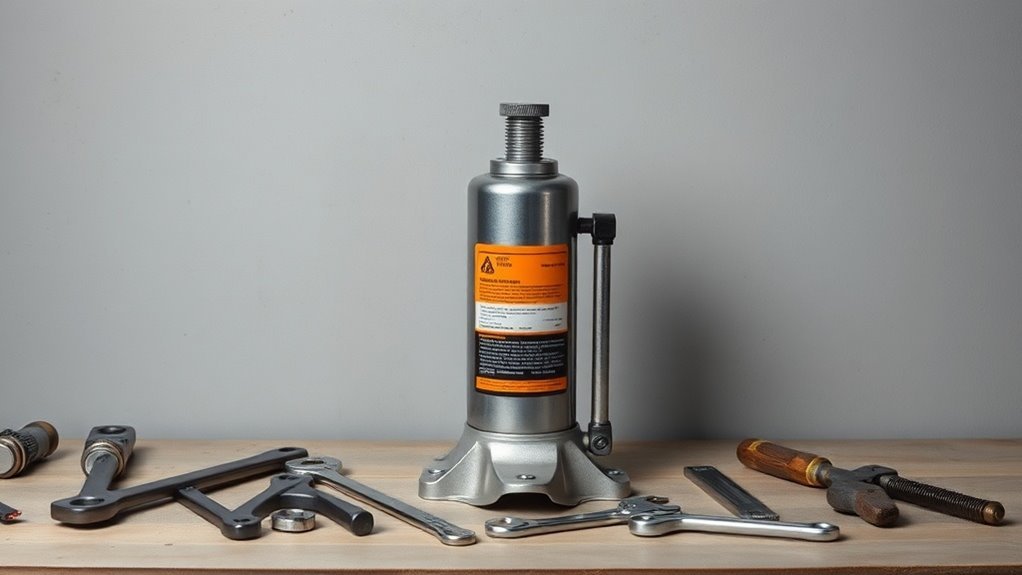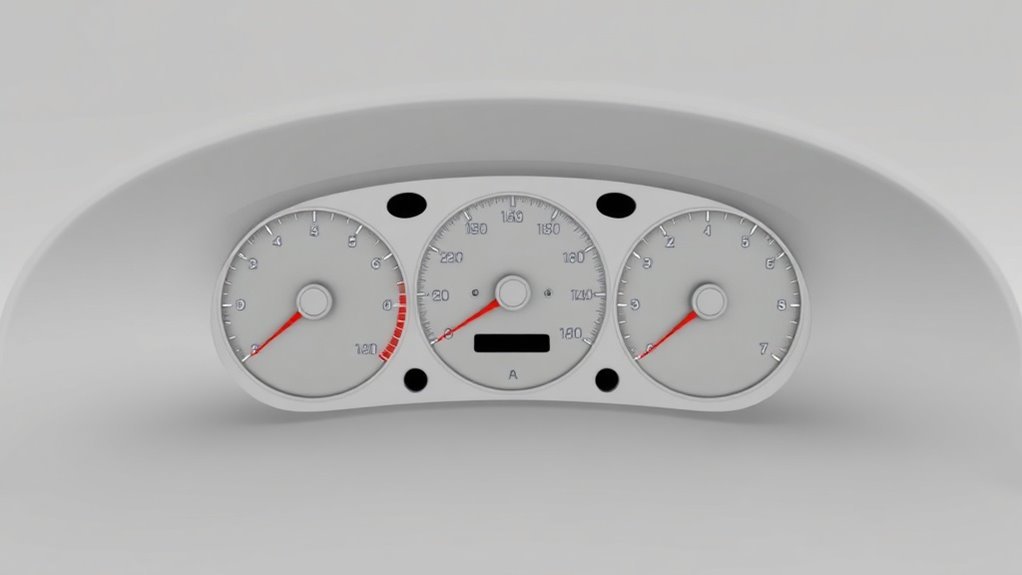The Mechanics of a Wrench: How Leverage Works
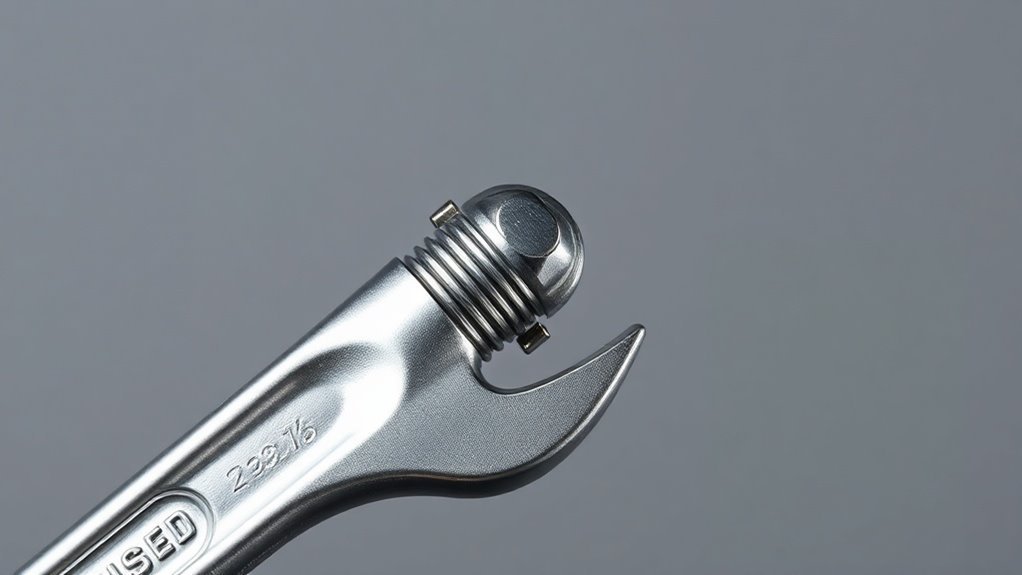
The mechanics of a wrench rely on leverage to multiply your input force, making it easier to tighten or loosen fasteners. A longer handle provides greater torque, reducing the effort you need to exert. Different types of wrenches, like adjustable and socket wrenches, enhance versatility and efficiency during tasks. Proper grip is essential for effective use. If you want to know more about how leverage improves your tool choice, there are plenty of fascinating details ahead.
Key Takeaways
- Leverage in a wrench allows users to apply greater force with less effort, enhancing efficiency in manipulating fasteners.
- The handle length directly impacts torque application; longer handles provide more leverage, reducing muscle effort during use.
- Gripping the wrench securely at the right angle improves torque application and prevents slippage while working.
- The pivot point of the wrench is crucial for maximizing leverage, allowing the user to achieve a mechanical advantage.
- Understanding the specific components of a wrench, such as the jaw and handle, aids in tool effectiveness for various tasks.
Understanding Leverage: The Basic Principle
Leverage is the magic that makes a wrench so effective. When you’re working with stubborn nuts or bolts, it’s all about applying force efficiently.
By gripping the handle and turning, you’re using your muscles to create a rotational force. The longer the handle, the more leverage you get, which means less muscle effort for you.
This principle works because the wrench transfers your input force into a greater output force, allowing you to overcome resistance with ease.
Understanding how leverage works helps you choose the right tool for a job, maximizing efficiency.
The Design of Different Types of Wrenches
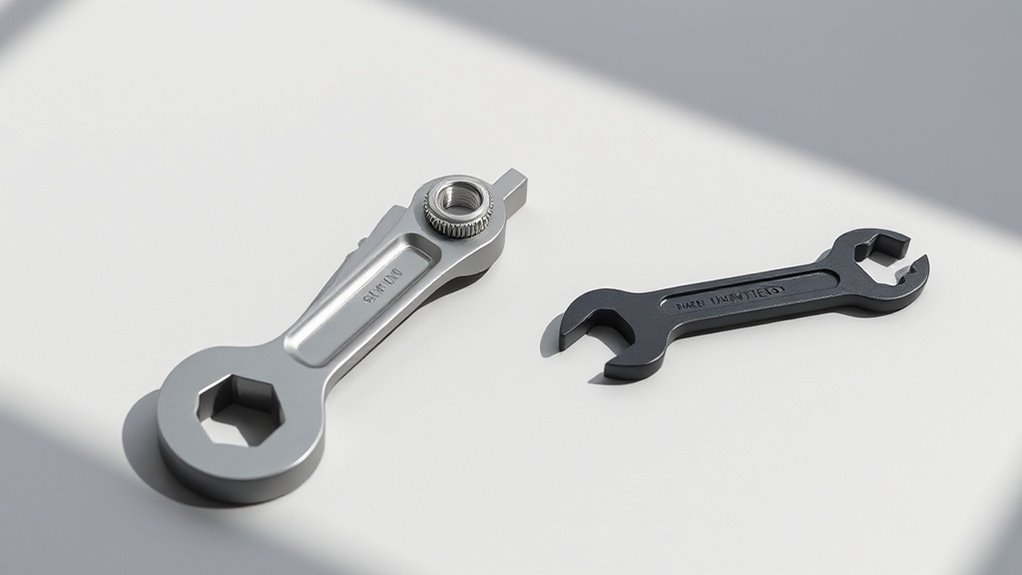
When you’re choosing a wrench, understanding the features of adjustable wrenches and the variations in socket wrenches can make all the difference. Each design has its own unique advantages that cater to different tasks. Let’s look at the specifics of these tools to help you decide which is best for your needs. Additionally, knowing the benefits of using socket sets can enhance your efficiency in mechanical tasks.
Adjustable Wrench Features
Adjustable wrenches are versatile tools, designed to accommodate a range of nut and bolt sizes with ease. Their practical features make them indispensable for both professionals and DIY enthusiasts alike.
Here are some key features that you should look for:
- Jaw Adjustment: A smooth sliding mechanism allows for quick adjustments to fit various sizes.
- Ergonomic Handle: A comfortable grip reduces fatigue during prolonged use.
- Measurement Scale: Some models include a built-in scale, helping you gauge sizes without guessing.
- Durable Materials: Look for wrenches made of high-quality steel to enhance durability and resistance to wear.
With these features in mind, you’ll find the right adjustable wrench for your needs, making any project a breeze.
Socket Wrench Variations
Socket wrenches, with their array of designs, provide a specialized approach to tackling various fasteners. You’ll find variations that suit your needs, whether for tight spaces or heavy-duty use. It’s all about efficiency and comfort.
Here’s a quick overview of some common socket wrench types:
| Type | Description |
|---|---|
| Standard Socket | Ideal for everyday tasks. |
| Deep Socket | Perfect for longer bolts. |
| Universal Socket | Fits different shapes. |
| Impact Socket | Designed for heavy tools. |
| Swivel Socket | Allows for angled access. |
Each type enhances your ability to work smarter, making that next project less frustrating and more fulfilling. Embrace the right socket design, and you’ll feel the difference in your grip!
How Wrenches Amplify Force

Wrenches can multiply your input force, making it easier to tighten or loosen fasteners. This amplification comes from the leverage created by the wrench’s design. When you apply force at the end of the handle, that force is transferred through the wrench to the fastener.
Here’s how it works:
- Length of the handle: A longer handle gives you more leverage.
- Angle of force: Applying force at the right angle enhances effectiveness.
- Wrench type: Different designs, like ratchets, provide additional torque with less effort.
- Grip: A secure grip allows you to apply force effectively without slipping.
Using a wrench, you can tackle tough fasteners with considerably less effort than using your hands alone.
The Importance of Handle Length in Wrench Efficiency
The effectiveness of a wrench largely hinges on the length of its handle. A longer handle allows you to apply more torque with less effort, making it easier to loosen or tighten bolts.
When you grasp the handle, leverage comes into play—extending the distance from the pivot point increases your mechanical advantage. If you’re dealing with stubborn fasteners, a longer handle can considerably reduce the amount of force you need to exert.
Conversely, a shorter handle may require more effort on your part, leading to potential fatigue or strain. It’s vital to choose a wrench with a handle length suited to your tasks, ensuring efficiency and comfort.
With the right handle length, you’ll experience smoother operation and better results.
Real-World Applications of Leverage in Fastening
Leverage plays an essential role in everyday tool usage, making your fastening tasks easier and more efficient.
When you understand mechanical advantage, you’ll notice how the length of a wrench handle enhances your ability to tighten or loosen bolts with less effort. This principle is particularly important in ensuring correct torque settings to achieve optimal tension in fasteners without risking damage or failure of components.
Let’s explore how these principles apply in real-world scenarios.
Everyday Tool Usage
When tackling a home repair or automotive task, you’ve likely reached for a wrench without giving much thought to the mechanics at play.
Understanding leverage in these everyday tools can make your work easier. Here are some common applications where leverage shines:
- Loosening Stubborn Bolts: Using a long wrench minimizes the force you exert, making it easier to break free a stuck bolt.
- Tightening Fasteners: A little extra leverage can guarantee a secure fit without over-exerting yourself.
- Crafting DIY Projects: Whether assembling furniture or constructing a shelf, leverage helps you apply just the right amount of torque.
- Automotive Repairs: From tire changes to engine work, leverage plays an essential role in efficient repairs.
Embracing these principles can save you time and effort!
Mechanical Advantage Explained
Many people mightn’t realize how mechanical advantage plays an essential role in fastening applications.
When you use a wrench, it’s all about leverage. By increasing the length of the lever arm, you can apply less force to tighten or loosen bolts effectively. Think about it: the longer the handle of your wrench, the easier it’s to turn stubborn nuts or screws.
This principle isn’t limited to just wrenches; it’s the same for screwdrivers and pliers. In industrial settings, workers often use hydraulic torque wrenches, maximizing mechanical advantage to tackle hefty bolts effortlessly.
Understanding this concept not only saves you effort but also guarantees secure fastening, which is important for safety in construction and mechanical maintenance.
Tips for Choosing the Right Wrench for the Job
How do you know which wrench is best for your task at hand? The right tool can make all the difference in your project’s success. Here are some tips to help you pick the right wrench:
Choosing the right wrench is crucial for project success; the right tool makes all the difference.
- Size matters: Verify the wrench fits the fasteners you’re working with, whether they’re metric or imperial.
- Type of wrench: Consider if you need a combination wrench, adjustable wrench, or a specific socket wrench for the job.
- Material quality: Choose wrenches made from durable materials like chrome vanadium or chrome molybdenum for longevity.
- Grip and comfort: Look for a wrench with a comfortable grip to reduce fatigue while working on long tasks. Additionally, selecting a wrench designed for specific tasks can significantly enhance your efficiency during your projects.
Questions
What Materials Are Commonly Used to Make Wrenches?
Wrenches are commonly made from steel alloys for strength and durability, often coated with chrome for corrosion resistance. Some wrenches may also use plastic or rubber for grips, enhancing comfort and control during use.
Can Wrenches Be Used for Tasks Other Than Fastening?
Yes, you can use wrenches for tasks beyond fastening. They’re great for prying, loosening rusted parts, or even as makeshift tools in emergencies. Just be careful; using them incorrectly might damage the wrench or the item.
How Do I Maintain My Wrench for Longevity?
To maintain your wrench for longevity, keep it clean and dry, avoid exposure to corrosive elements, and lubricate the moving parts regularly. Store it in a protective case to prevent damage and guarantee peak performance.
What Are Torque Specifications for Different Wrench Types?
Torque specifications vary by wrench type. For socket wrenches, 12-100 ft-lbs is common. Torque wrenches generally range from 10-150 ft-lbs. Always check manufacturer guidelines for specific ratings to guarantee proper usage and safety.
Are There Safety Tips for Using Wrenches Effectively?
When it’s time to get your hands dirty, always wear safety goggles and keep your grip firm. Also, guarantee your workspace is clear. It’s better to be safe than sorry while tightening those bolts.
Conclusion
So there you have it—wrenches are just simple tools, right? They only enhance our strength and make tough jobs easier. Yet, it’s ironic how we often overlook their mechanics and the leverage that turns us into superheroes, at least in the domain of DIY. Next time you reach for a wrench, remember: it’s not just about loosening nuts and bolts; it’s about mastering the art of leverage, turning mere mortals into mighty fixers, one turn at a time.

